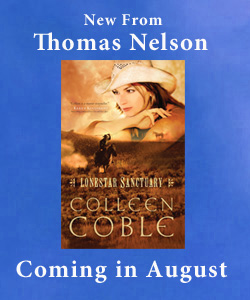Christian fiction tends to be
primarily guilty of putting message over story more than other
worldview writing.
Tough economic times.
Discretionary spending down. Traditional publishing models turned
inside out with new technology.
At a time when many in the
publishing industry see their glasses as half empty, I lift mine in a
toast—to a very bright future in fiction.
As Thomas Nelson’s fiction
publisher, I’m invigorated by the growth we’ve seen since launching a
24/7 fiction division four year ago. During that time, I’ve found
several simple principles that together have contributed to Nelson’s
growth in the past four years. If you’re in the book industry
(especially fiction) as either a writer or publisher, I invite you to
gather around the table with me so I can share a few things I’ve
learned that keep my glass half full all the time.
1) Live from a mindset
of abundance rather than scarcity. When something is good,
it’s all the more reason to find new ways to give it away. The more
people try great things, the more people will want to buy it. Don’t
feel nervous about giving it away. And don’t limit the giveaway to a
chapter. Heck, in fiction, give away half a novel—or in some cases, a
whole novel. This is especially easy electronically. If it hooks
people, they’ll return for more. Same goes for good ideas and
credit—give both freely and watch what happens.
2) In story, Christian
worldview trumps preaching every time. Every novel has a
worldview— regardless of the section of a bookstore it’s in. But
Christian fiction tends to be primarily guilty of putting message over
story more than other worldview writing. Preaching or agenda-driven
messages are great for nonfiction. But for novels— real novels—we need
more artists who breathe the art of story, who live to create. Let the
story be the story. And be confident that God will work through it.
Don’t shy away from issues of faith and salvation—it will come through
if it’s inside you—and if you get out of the way!
3) Your primary
customer is the consumer, not the retailer. How many of us in
publishing really know who buys our books? My guess is very few. We
spend more time getting to know the gatekeeper, or retail buyer, than
the reader. By all means get to know both, but spend the most time with
the fans, the readers of your authors. Understand them: who they are;
what they want; where they buy. The retail side of the equation will be
much easier when you know each author’s hot buttons and fan base and
can amass them at will when a new novel arrives.
4) Reader buzz trumps
the marketing budget. In fact, a story that doesn’t have a
“Wow!” factor or that doesn’t emotionally engage the reader is destined
for a quick death—regardless of the marketing budget. If a reader can
finish a novel, yawn, and put
the book on his/her shelf without sharing the story or experience with
anyone else, the novel has failed. But if
everyone who reads the novel raves to two friends who each buy the
novel and rave to two friends who . . . well, you get the picture. Some
novels have it. Some don’t. Can you tell ahead of time which of your
stories have “it”?
|
5) Christian isn’t the
same thing as G-rated. I’m not sure who started using
“Christian” as an adjective, as in “that’s not a very Christian thing
to say, do, etc.” When it comes to story, the Bible certainly deals
with themes and issues that aren’t always G-rated, safe, or sugary
sweet. Those are not even the main attributes God lists for his
followers. The Bible paints a dangerous world that’s in a spiritual
war, with followers of Christ dying to self and learning what faith is
and how to love unconditionally. People die. Evil thrives. Things get
messy. But lives are transformed in the midst of that. And God and good
do ultimately win. We need more stories that deal with real life and
epic good vs. evil. It’s fine for some novels to end with the perfect
couple riding off in the sunset hand in hand, but let’s not feel
compelled to see that as the only—or even the best—story.
6) Sell-through is
always the true test, not sell-in or first printing. Yes,
books have less time to make a splash than in decades past. But I’ll
take any day the novel that has a long, slow burn and builds than one
that’s a quick flash and disappear. And I’d rather sell-in fewer
initial copies per store but see them all sell-through with reorders
than have a huge sell-in followed by equally huge returns a few months
later. We need to all be less impressed by large sell-in stats or first
printings and more impressed by the long-term success and sell-through
of novels.
7) Partner with those
who share risk and reward. In publishing, it’s not all about
the biggest advance. It’s about a fair advance that can be earned out
so that royalty can kick in. After all, an advance should be just
that—an advance on future performance. Our best relationships are with
creative storytellers who thrive on partnership, are hungry to learn
together, and are short on ego. When a book is successful and things
are going great, both sides are quick to point out the other’s role.
And when things go less well, both parties are quick to look inward
first. When you find that kind of writer or publisher, keep them for
life. Those driven by ego or insecurity, on the other hand, tend to
deal equally unwell with failure and success. Choose wisely!


|








